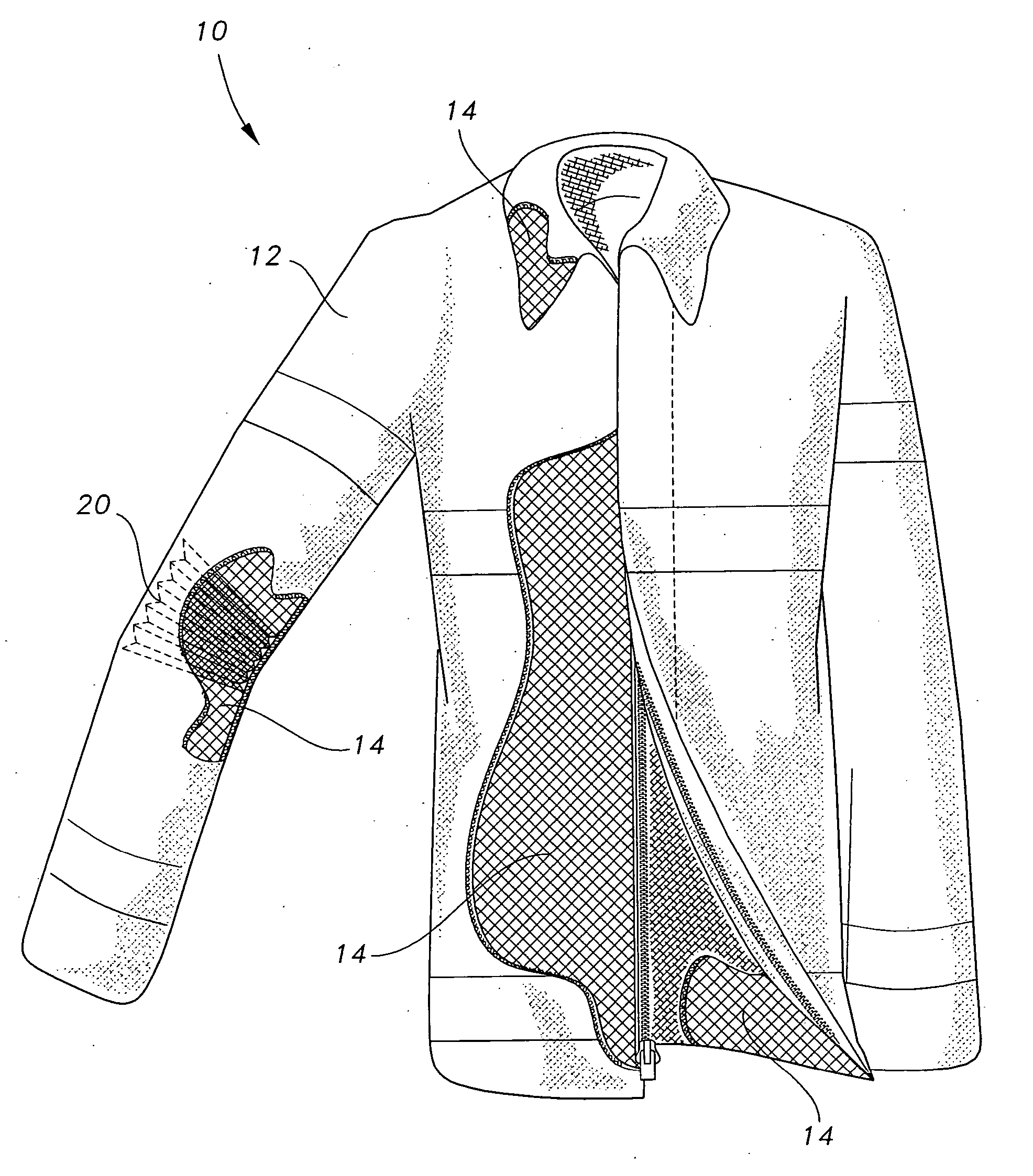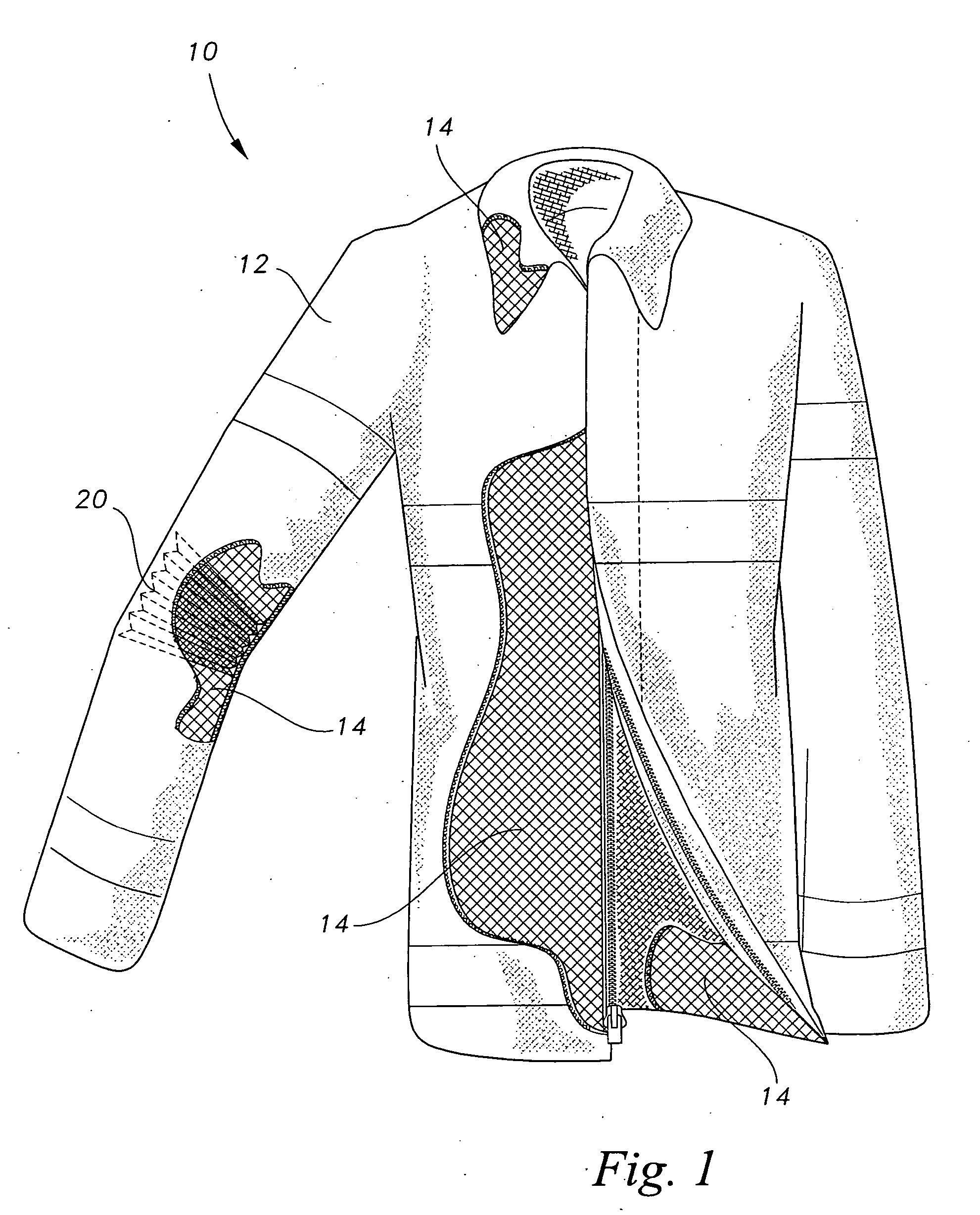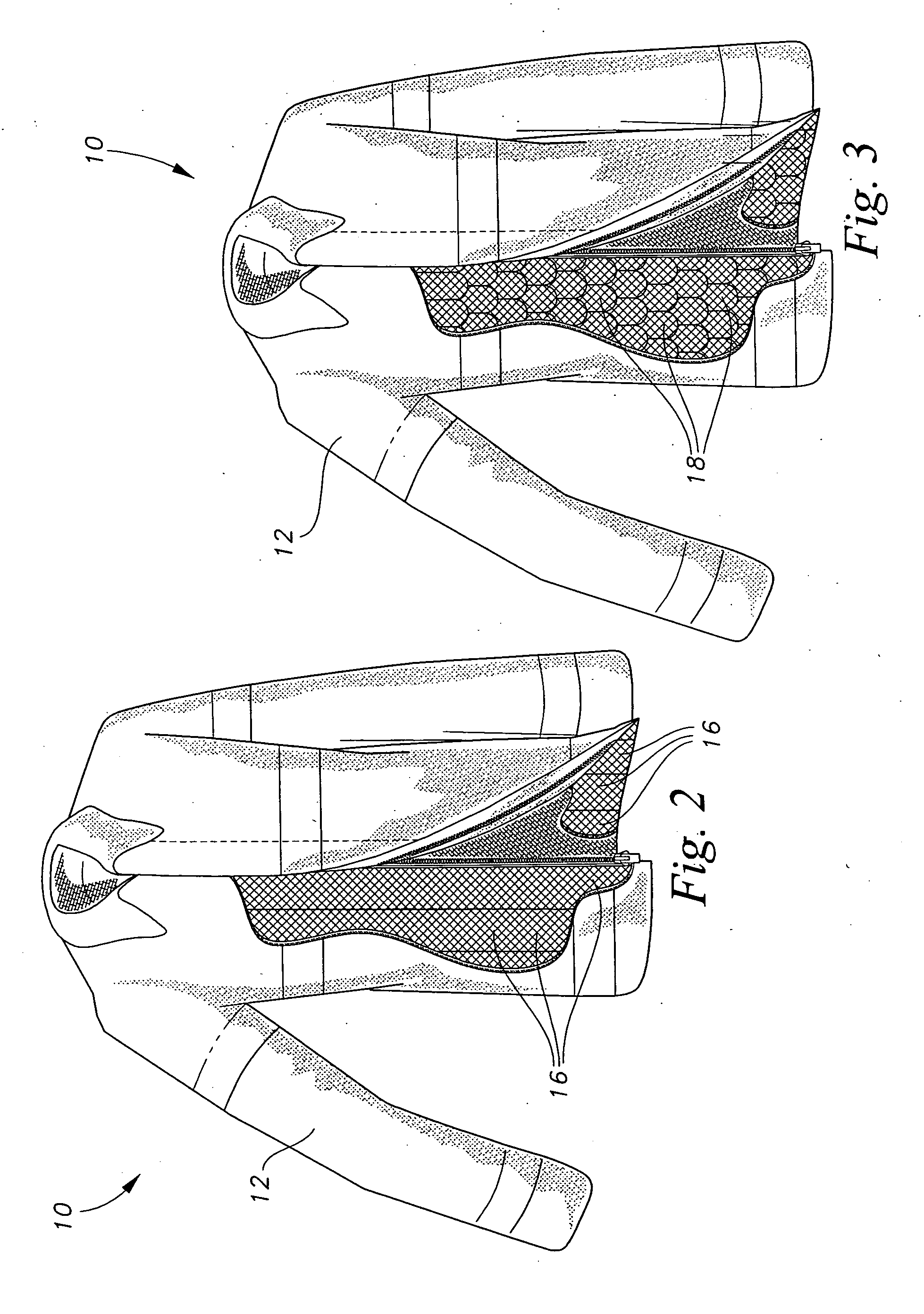Hazardous duty garments
a technology of garments and hazards, applied in the field of protective garments, can solve the problems of unprotected flesh being burned very quickly, extreme momentary radiant heat levels, uncomfortable situations, etc., and achieve the effects of allowing the wearer to freely move, easy inspection, and easy replacement of heat and radiation panels
- Summary
- Abstract
- Description
- Claims
- Application Information
AI Technical Summary
Benefits of technology
Problems solved by technology
Method used
Image
Examples
Embodiment Construction
[0030] The following detailed description is of the best presently contemplated modes of carrying out the invention. This description is not to be taken in a limiting sense, but is made merely for the purpose of illustrating general principles of embodiments of the invention.
[0031] The present invention provides an improved hazardous duty garment for protecting the user from high temperatures and extremely high radiant heat conditions. Externally, the garment is similar in many ways to existing garments currently manufactured, but this garment includes a metal screen heat barrier beneath the outer shell of the garment. The metal screen acts as a barrier to dissipate high temperature and extreme high radiant heat loads. It is virtually impervious to high temperatures experienced by firefighters and will not break down and degrade like more common fire-resistant fabrics and fibers.
[0032]FIGS. 1-5 show different embodiments of the hazardous duty garments. FIGS. 1-3 show a coat 10 and...
PUM
 Login to View More
Login to View More Abstract
Description
Claims
Application Information
 Login to View More
Login to View More - R&D
- Intellectual Property
- Life Sciences
- Materials
- Tech Scout
- Unparalleled Data Quality
- Higher Quality Content
- 60% Fewer Hallucinations
Browse by: Latest US Patents, China's latest patents, Technical Efficacy Thesaurus, Application Domain, Technology Topic, Popular Technical Reports.
© 2025 PatSnap. All rights reserved.Legal|Privacy policy|Modern Slavery Act Transparency Statement|Sitemap|About US| Contact US: help@patsnap.com



